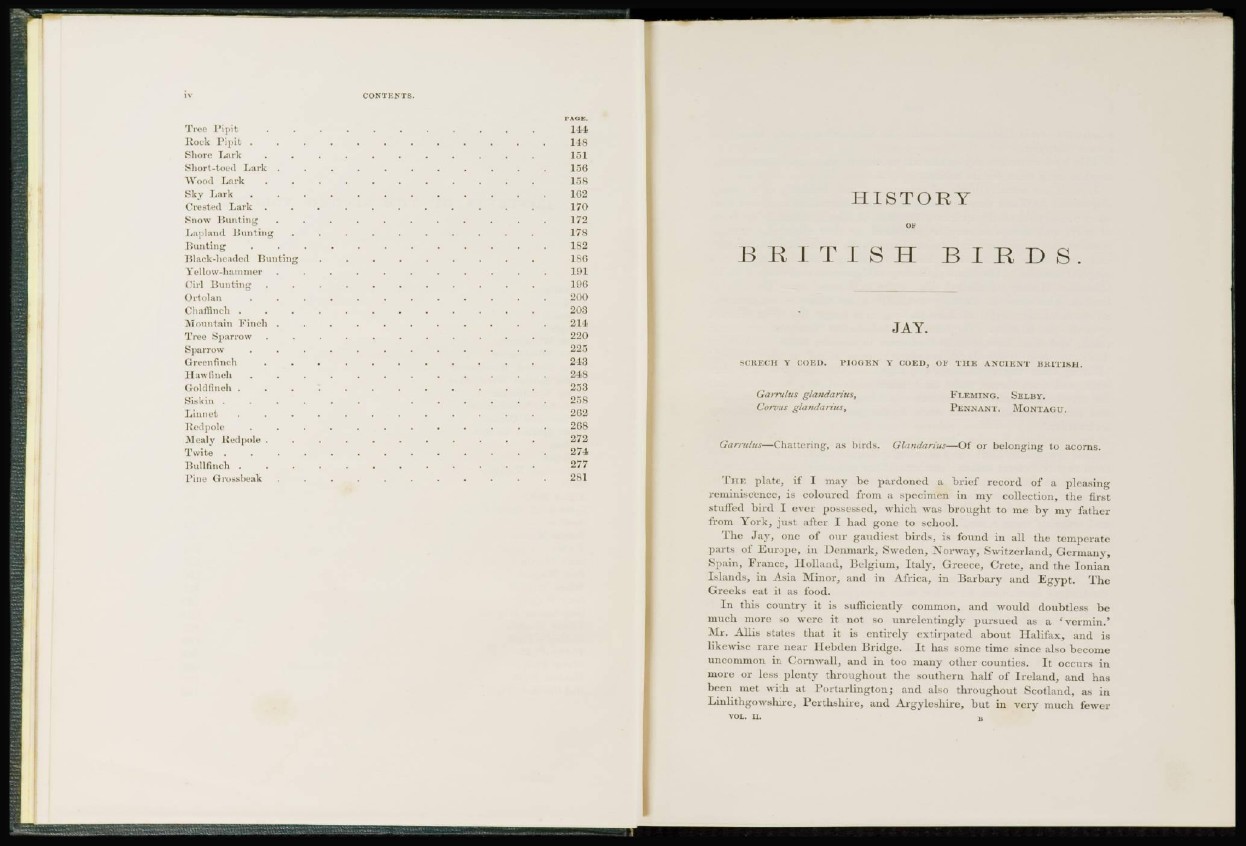
iv CONTENTS.
TAOE.
Tree Pipil 144
Kock Pipit 148
Shore Lark 151
Short-toed Lark 156
Wood Lark 1;",a
Sky Dark lu2
CreBted Lark 170
Snow Bunting *™
Lapland Bunting 178
Bunting 182
Black-headed Bunting 1SB
Yellow-hammer *
Cirl Bunting 196
O<»rtj oll an . . . . 200
Chaffinch 203
Mountain Finch 244
Tree Sparrow
Sparrow
Greenfinch . . . • • » • • ' • •
Hawfinch
Goldfinch . 233
n- u Sisk. in . . .. . . . 258
tL- inne*t . . . . 2G2
T R, od, pol,a 2G8 1 . 070 Jlealv Bed pole
mT_wJi. te . . . 274
Bullfinch -"
iP.-i ne G<•r osao1 eakv . . . . 281
H I S T O RY
or
B R I T I S H B I R D S.
JAY.
SCKECB V COED. IMOGEN V COED, OF THE ANCIENT BRITISH.
Garrulus glandarius, FLEMING. SELBY.
Corvus glandarius, PENNANT. MONTAGU.
Garrulus—Chattering, as birds. Glandarius—Of or belonging tu acorns.
THE plate, if I may be pardoned a brief record of a pleasing
reminiscence, is coloured from a specimen in my collection, the first
stuffed "bird I ever possessed, which was brought to me by my father
from York, just after I had gone to school.
The Jay, one of our gaudiest b i r d s , is found in all the temperate
parts of Europe, in Denmark, Sweden, Norway, Switzerland, Germany,
Spain, France, Holland, Belgium, Italy, Greece, Crete, and the Ionian
Islands, in Asia Minor, and in Africa, in Barbary and Egypt. The
Greeks eat it as food.
In this country it is sufficiently common, and would doubtless be
much more so were it not so unrelentingly pursued as a 'vermin.'
Mr. Allis states that it is entirely extirpated about Halifax, and is
likewise rare near llebden Bridge. It has some time since also become
uncommon in Cornwall, and in too many other counties. It occurs in
more or less plenty throughout the southern half of Ireland, and has
been met with at Portarlington; and also throughout Scotland, as in
Linlithgowshire, Perthshire, and Argyllshire, but in very much fewer
VOL. u. a